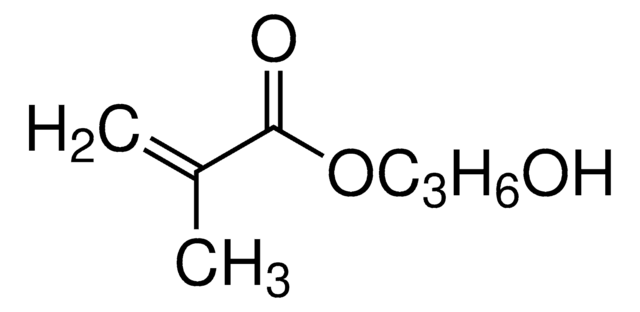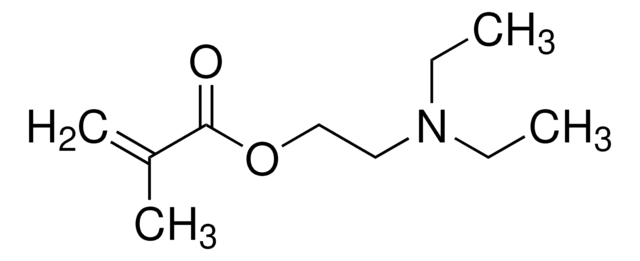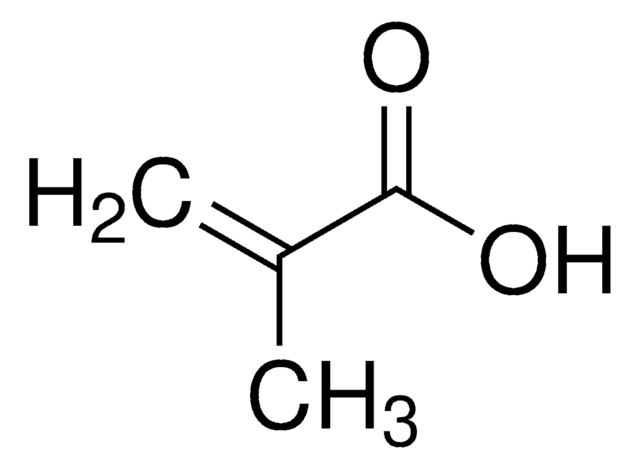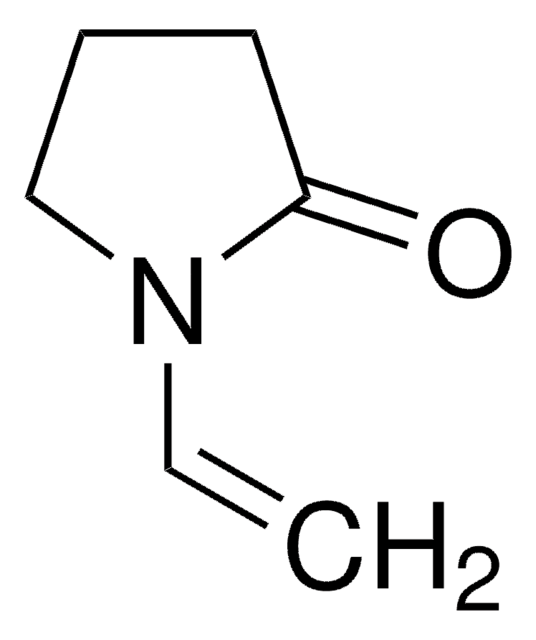Key Documents
17348
2-Hydroxyethyl methacrylate
embedding medium (for microscopy)
Synonim(y):
1,2-Ethanediol mono(2-methylpropenoate), Glycol methacrylate, HEMA
About This Item
Polecane produkty
klasa czystości
embedding medium (for microscopy)
Poziom jakości
gęstość pary
5 (vs air)
ciśnienie pary
0.01 mmHg ( 25 °C)
Próba
≥99%
Postać
liquid
zawiera
~0.001% hydroquinone monomethyl ether as stabilizer
zanieczyszczenia
<250 mg/kg free acid (as methycrylic acid) (T)
współczynnik refrakcji
n20/D 1.453 (lit.)
n20/D 1.453
tw
67 °C/3.5 mmHg (lit.)
gęstość
1.071 g/mL at 20 °C
1.073 g/mL at 25 °C (lit.)
temp. przechowywania
2-8°C
ciąg SMILES
CC(=C)C(=O)OCCO
InChI
1S/C6H10O3/c1-5(2)6(8)9-4-3-7/h7H,1,3-4H2,2H3
Klucz InChI
WOBHKFSMXKNTIM-UHFFFAOYSA-N
Szukasz podobnych produktów? Odwiedź Przewodnik dotyczący porównywania produktów
Zastosowanie
Hasło ostrzegawcze
Warning
Zwroty wskazujące rodzaj zagrożenia
Zwroty wskazujące środki ostrożności
Klasyfikacja zagrożeń
Eye Irrit. 2 - Skin Irrit. 2 - Skin Sens. 1
Kod klasy składowania
10 - Combustible liquids
Klasa zagrożenia wodnego (WGK)
WGK 1
Temperatura zapłonu (°F)
222.8 °F - closed cup
Temperatura zapłonu (°C)
106 °C - closed cup
Środki ochrony indywidualnej
Eyeshields, Faceshields, Gloves, type ABEK (EN14387) respirator filter
Certyfikaty analizy (CoA)
Poszukaj Certyfikaty analizy (CoA), wpisując numer partii/serii produktów. Numery serii i partii można znaleźć na etykiecie produktu po słowach „seria” lub „partia”.
Masz już ten produkt?
Dokumenty związane z niedawno zakupionymi produktami zostały zamieszczone w Bibliotece dokumentów.
Klienci oglądali również te produkty
Nasz zespół naukowców ma doświadczenie we wszystkich obszarach badań, w tym w naukach przyrodniczych, materiałoznawstwie, syntezie chemicznej, chromatografii, analityce i wielu innych dziedzinach.
Skontaktuj się z zespołem ds. pomocy technicznej















